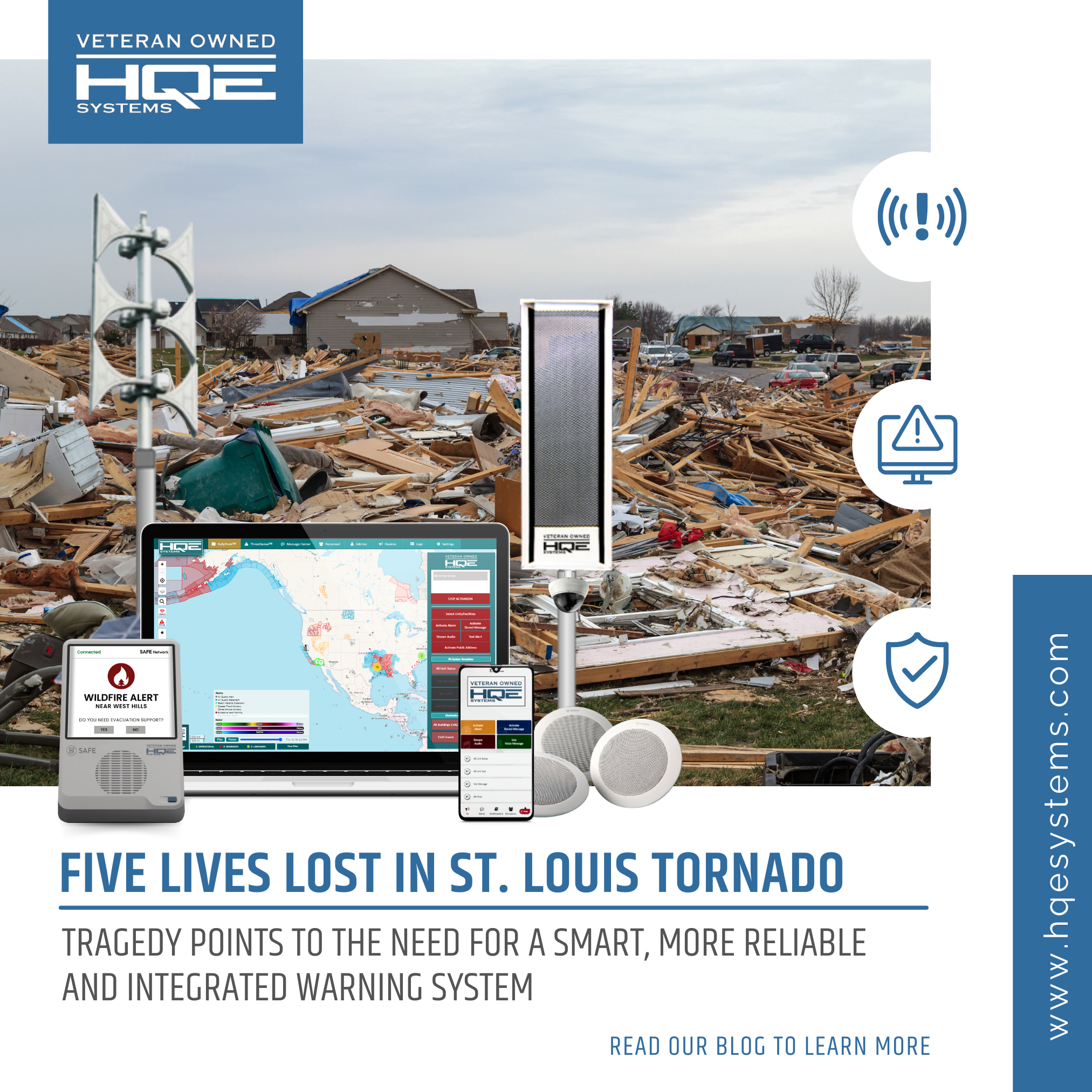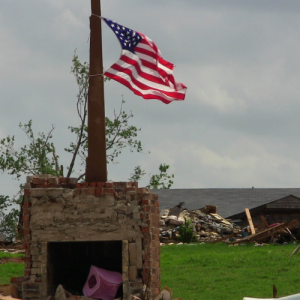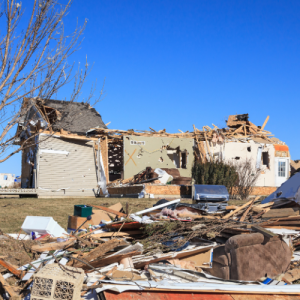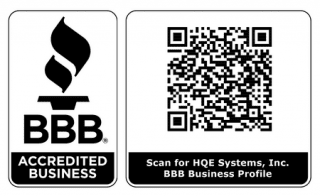Five Lives Lost in St. Louis Tornado Points to Gaps in Emergency Alerting Systems
Why the St. Louis Tornado Reminds Us Preparedness Still Matters
On May 16, 2025, an EF3 tornado tore through several St. Louis neighborhoods, killing five people, including three children, and injuring nearly 40 others. The National Weather Service issued a tornado warning just minutes before the storm made landfall, but many residents were caught off guard by the speed and strength of what followed. Entire blocks were destroyed, and communities were forever changed. As reported by CBS News, questions remain about alert coverage. This blog reflects on the storm’s impact and how technology can help save lives when disaster strikes.
Anatomy of the Storm
At 2:39 p.m. CDT on May 16, 2025, an EF3 tornado struck Clayton, Missouri, and began a destructive 22 mile track across northern St. Louis. Within minutes, the storm swept through densely populated neighborhoods, crossed the Mississippi River into Illinois, and left a lasting mark on thousands of families (KSDK).
With wind speeds reaching up to 152 miles per hour, the tornado remained on the ground for nearly 24 minutes. In that short but devastating span, entire blocks of homes, schools, churches, and businesses were reduced to debris. Trees were uprooted, vehicles overturned, and power was knocked out across large sections of the city. The event is already being remembered as one of the strongest and most damaging tornadoes in St. Louis in decades.
More than 5,000 structures were reported damaged or destroyed, and the initial estimate of property loss stands at more than 1.6 billion dollars (CBS News). Insurance adjusters, structural engineers, and local officials began assessments almost immediately, and long-term recovery efforts are expected to continue well into the future. Emergency shelters across the city opened quickly to receive displaced families, some of whom had no time to gather their belongings.
This was the first deadly tornado to impact St. Louis since 1959. The storm carved through neighborhoods like Greater Ville and Fountain Park, communities rich in culture and history. Neighbors helped neighbors, and grassroots recovery efforts began before the skies had even cleared (Fox Weather).
Mayor Cara Spencer declared a state of emergency within hours, and the city mobilized rapidly to support those affected. While questions about preparedness will naturally arise over time, one thing was clear from the very beginning: the people of St. Louis showed resilience, unity, and compassion in the face of unimaginable destruction.
Lives Lost, Communities Shattered
One fatality occurred when a church roof collapsed during weekday activities. Those inside had only moments to react as the structure gave way. Survivors described scenes of confusion and chaos, followed by moments of bravery as people helped each other find safety while waiting for emergency crews to arrive (CBS News).
Grief moved through the city like an aftershock. Candlelight vigils were held across parks, schools, and church steps. Children left drawings and flowers outside homes reduced to debris. Neighbors, many still shaken themselves, brought warm meals to those who had lost everything.
In neighborhoods like Greater Ville and Fountain Park, the losses carried layers of meaning. These are communities shaped by generations of resilience, rich in cultural and spiritual identity. The pain was personal, but so was the support. Residents rallied to check on one another, offer shelter, and provide emotional comfort that no emergency plan could ever script.
While aid and recovery efforts began quickly, healing was much slower. Behind every collapsed roof and scattered belonging, was a family whose story had suddenly been rewritten. Yet through all of it, one truth stood out. In the face of destruction, the people of St. Louis showed what it means to be a true community.
Strengthening the Alerting Process for the Future
When the National Weather Service issued a tornado warning at 2:34 p.m. on May 16, city teams across St. Louis were already working to respond. The storm moved quickly, leaving only a brief window for action. Events like this highlight how vital coordination, timing, and clear communication are in emergency response (CBS News).
St. Louis operates a wide-reaching outdoor warning system with more than 60 sirens across the city. Like many emergency systems around the country, its success depends on trained personnel, interdepartmental coordination, and the ability to activate alerts in real time. During the May 16 event, city leaders and response teams were tested under intense pressure.
Across the emergency management field, professionals recognize that no single method of communication is enough. The most effective strategies use multiple tools together. Sirens, public address systems, mobile alerts, social media, and word of mouth all play important roles. When these channels work together, communities are better protected.
Moments like this encourage teams to evaluate current systems, strengthen internal processes, and invest in layered, redundant communication strategies. Every city has unique infrastructure, staffing, and needs, and events like the St. Louis tornado are reminders of the value of continued training and collaboration.
By sharing experiences and staying committed to continuous improvement, emergency managers across the country can build even more resilient systems for the future.
Residents React: Grief and the Search for Meaning
In the days following the tornado, the St. Louis community came together in shared heartbreak. Candlelight vigils were held in parks, schoolyards, and church courtyards. Fundraisers were organized to support grieving families. On social media, residents offered prayers, photos, and personal tributes. Grief filled the city, but so did compassion.
At public meetings, citizens expressed both sorrow and concern. Many wanted to understand what happened and how they could help prevent future tragedies. One father told reporters, “We rely on that sound. If I had heard it, I would have gotten my children into the basement in time” (CBS News).
City leadership responded with empathy. Mayor Cara Spencer addressed the public with compassion, acknowledging the need to evaluate existing systems and prioritize community safety. Residents were not looking for someone to blame. They were seeking reassurance that their voices mattered and that everything possible would be done to protect lives going forward.
The Long-Term Impact of Lost Trust
When an alert does not reach the people it is meant to protect, the consequences go beyond the immediate emergency. In many of the neighborhoods hardest hit by the tornado, residents began asking whether future warnings would arrive in time. This uncertainty has emotional weight, especially in communities that have experienced generations of disinvestment.
Emergency management systems rely on more than equipment. They rely on trust. People take action because they believe they will be informed when danger is near. When that belief is shaken, the ability to respond quickly and confidently is affected.
Restoring this trust is a vital part of recovery. As physical repairs begin, so must the work of rebuilding confidence in public safety. Communities must know that when the next storm comes, they will hear it, they will see it, and they will have the time they need to protect their loved ones.
HQE Systems Overview
HQE Systems is a Department of Homeland Security certified, minority and service disabled veteran owned small business. The company specializes in mass notification, access control, intrusion detection, CCTV, and integrated safety technologies. With decades of experience in both public and private sectors, HQE delivers tailored solutions that prioritize ease of use, rapid deployment, and community safety.
At its core, HQE is focused on helping agencies and organizations stay connected and responsive during emergencies. Their team understands that the most effective security systems are not just about equipment, they are about ensuring people have the tools and information they need when seconds matter most.
HQE’s cloud-based platforms are scalable, secure, and designed to meet the needs of municipalities, school districts, hospitals, campuses, and enterprise facilities. Every solution is built with resilience in mind, from severe weather response to complex public safety coordination.
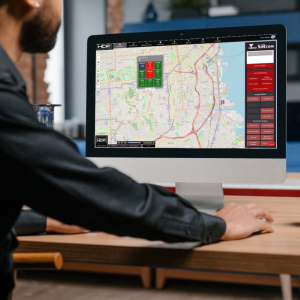
SiSA Smart Alert: Automated, Inclusive, Reliable
The SiSA Smart Alert platform was created to remove barriers between decision-makers and the people they serve. It connects directly with trusted sources like the National Weather Service and automates alerts across multiple communication methods at once. These include outdoor warning sirens, public address systems, mobile notifications, email, desktop pop-ups, and digital signage.
This type of automated activation means that even if staff are away from their desks, offsite at a meeting, or navigating a different crisis, alerts still go out on time. The system does not depend on a single person being in the right place at the right time. It is designed to act as soon as verified information becomes available.
SiSA supports over 100 languages and allows alert managers to tailor messages for different groups or regions. It also provides real-time metrics, allowing agencies to verify which alerts were sent and how many people received them.
In a fast-moving storm like the one that struck St. Louis, a platform like SiSA can help bridge the gap between detection and community awareness. Even a few seconds of early warning can help families get to shelter, guide schools to activate safety procedures, or allow first responders to reposition resources more effectively.
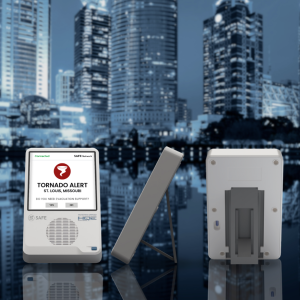
SAFE Network and SAFE Units: Resilience at Every Level
HQE’s SAFE Network is a fully independent communications mesh that continues operating even if cell service or power is lost. It uses a combination of solar energy and battery backup to maintain alert coverage throughout a city or campus.
The network links with outdoor sirens and indoor SAFE Units. These indoor devices are compact, easy to install, and provide both high-decibel audio alerts and clear visual messaging. With support for multilingual displays, they are particularly useful in schools, clinics, and community centers where language access matters.
SAFE Units can also be placed in government buildings, public housing complexes, and transportation hubs. If power fails or internet service goes down, these units continue working. That ensures that alerts are not only heard but also seen by residents in every part of the building.
The goal of the SAFE ecosystem is to eliminate single points of failure and provide layered communication that is accessible to everyone, regardless of their location, device, or physical ability.
A Reimagined May 16
Imagine if on May 16, 2025, the moment the National Weather Service issued the tornado warning, HQE’s alerting tools were in place. Sirens sounded automatically, digital signs flashed throughout schools and community centers, and indoor SAFE Units lit up in every hallway. Mobile phones received alerts within seconds, with messages in multiple languages reaching residents across every neighborhood.
In that version of events, time becomes an ally. Families are not caught off guard. Children have a chance to move to a shelter. First responders are informed and able to act. The loss may still be great, but the opportunity to save lives grows.
Technology cannot stop a tornado. But it can ensure that people are not alone when it comes.
From Tragedy to Transformation
We cannot undo the heartbreaking losses that occurred in St. Louis. But we can choose to honor those lives by making sure the same gaps that failed them never open again. Moments like these should not only be remembered with sadness. They should mark a turning point, a wake-up call to invest in smarter emergency infrastructure, empower local response teams, and rebuild the public’s trust in the systems meant to protect them.
This tragedy showed what happens when good people are left without timely tools. No one failed out of neglect. The systems in place were simply not designed to keep up with the speed and intensity of modern weather events. Now there is an opportunity to make things right, not just with words or apologies, but with meaningful upgrades and a real commitment to saving lives.

How HQE’s Technology Helps
HQE Systems offers more than technology. It offers peace of mind. The SiSA Smart Alert platform activates automatically, removing the need for human decision-making when seconds matter. It connects directly to trusted sources like the National Weather Service and sends alerts through outdoor sirens, mobile phones, email, public address systems, and digital signs all at once.
The SAFE Network keeps these alerts flowing even if power goes out or cell service is interrupted. SAFE Units installed in schools, churches, and shelters extend the message indoors with clear sound and bright visual cues in more than one hundred languages.
Together, these systems form a complete safety net. They fill in the gaps left by older tools and help communities act quickly. When every second matters, HQE makes every moment count.
Conclusion
The tornado that struck St. Louis left broken homes, broken hearts, and a painful silence. But it does not have to leave behind broken trust. With SiSA Smart Alert, the SAFE Network, and SAFE Units, cities can build a future where every person receives a warning in time to act.
Lives were lost that day, but the lessons can help protect others. The most powerful way to honor those lost is to ensure that every family hears the warning, no matter where they are. With the right tools in place, we can make sure that silence never wins again.
HQE Systems is a certified Veteran Owned Company. For more information about HQE Systems Inc. and its emergency management, electronic security, and integration solutions, please visit www.hqesystems.com.

Contact: David Ditto (Early Warning Systems Subject Matter Expert)
Email: David.Ditto@hqesystems.com
Phone Number: (843) 872-7020
____________________
HQE Systems, Inc. | HQE is a Minority-Owned Service Disabled Veteran Owned Small Business (SDVOSB) providing full solutions for: Mass Notification Systems, Electronic Security Systems, Software Development Services, Contract Support, and Prototyping Services. As a brand-agnostic solutions provider, HQE prides itself in providing the BEST solution for the project. HQE possesses over 30+ factory certifications and reseller licenses to ensure our clients receive the highest quality service at the ideal budget. HQE can provide full design, installation, integrations, upgrades, and long-term maintenance support for any size and scope project.

